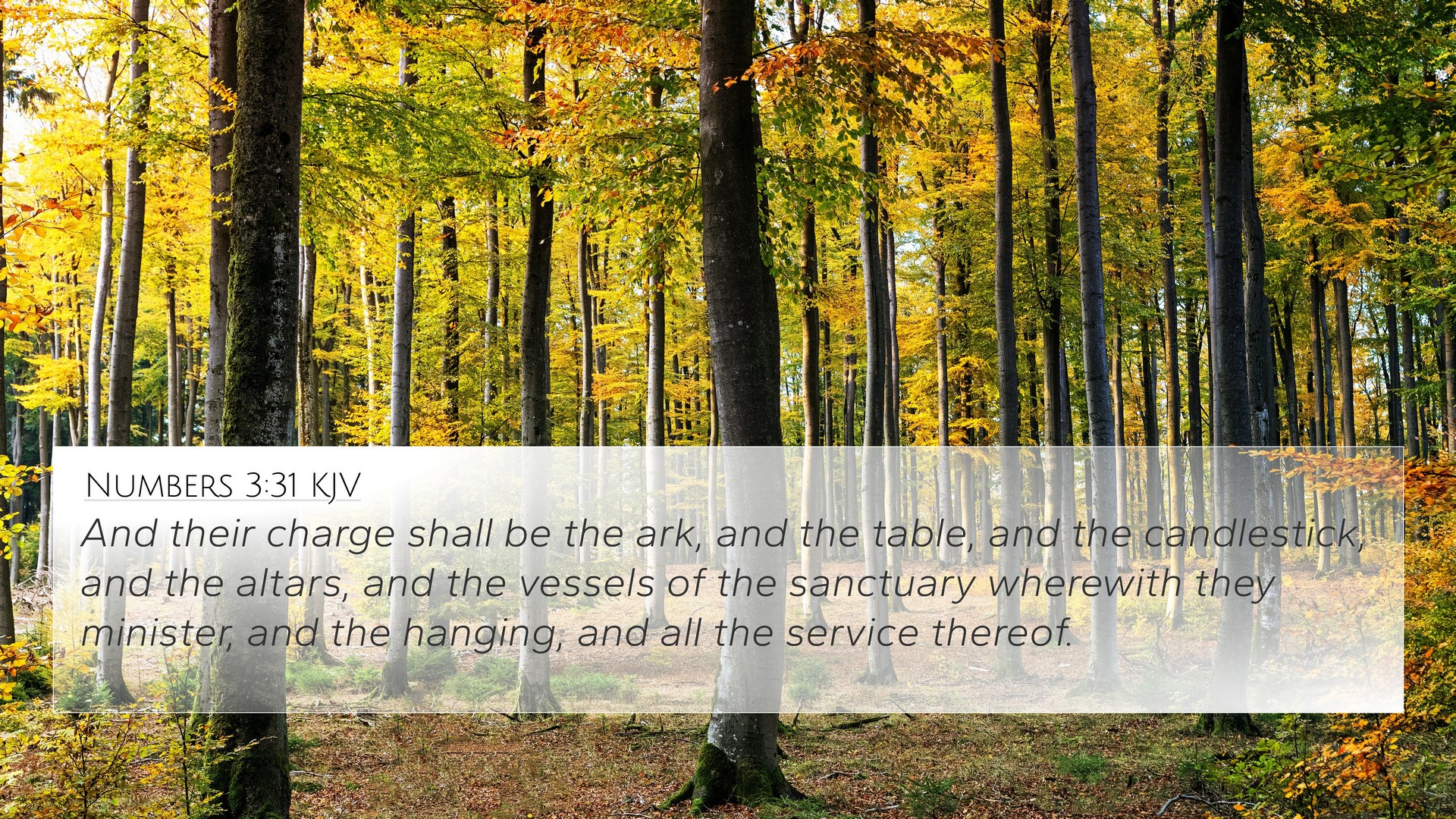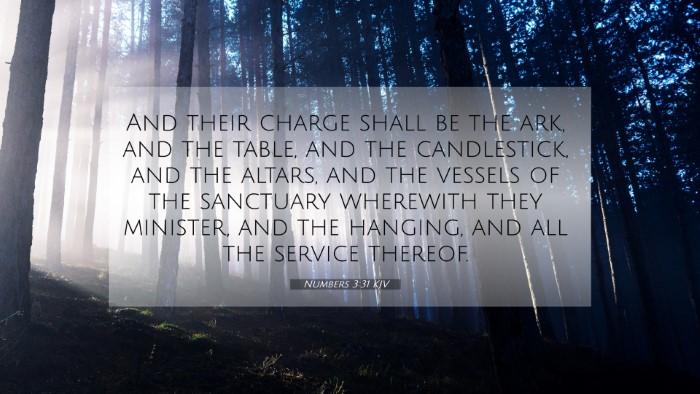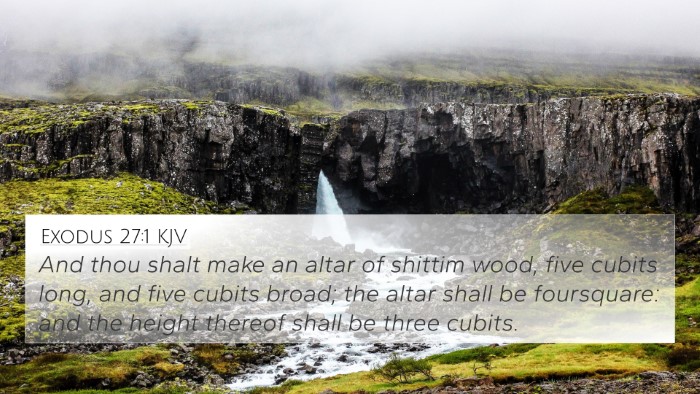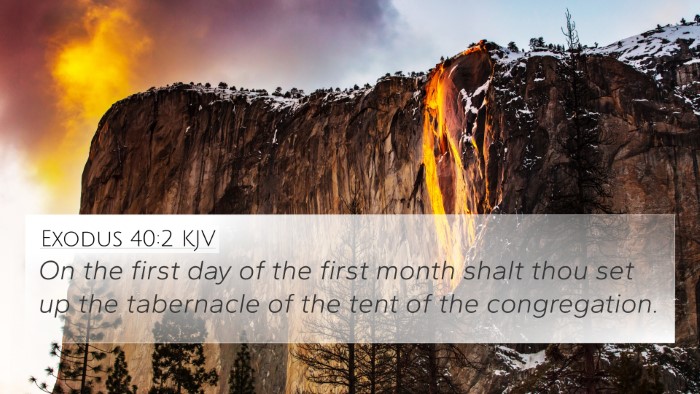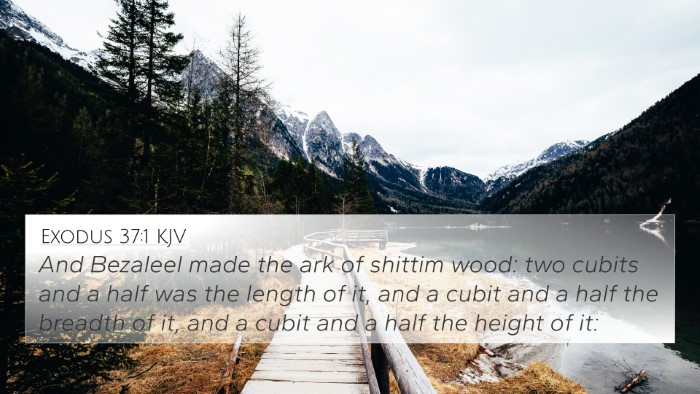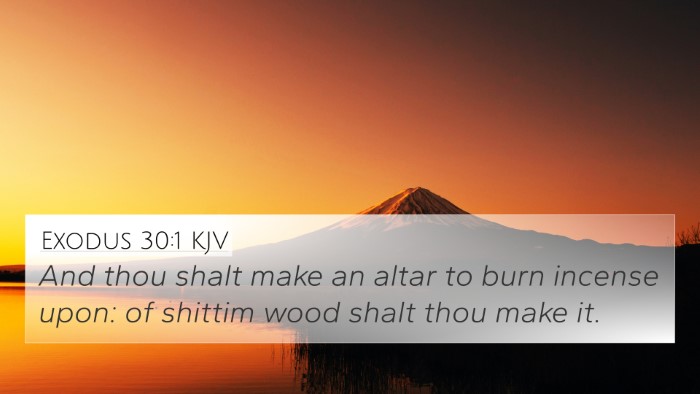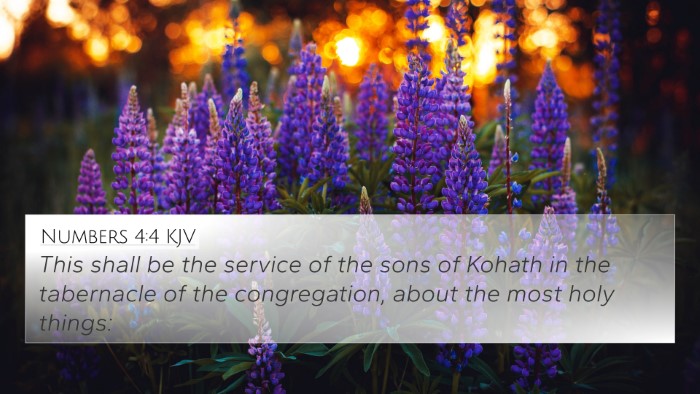Understanding Numbers 3:31
Verse: Numbers 3:31 states, "And their charge shall be the ark, and the table, and the candlestick, and the altars, and the vessels of the sanctuary wherewith they minister, and the hanging, and all the service thereof." This verse belongs to the section describing the responsibilities assigned to the sons of Kohath, a prominent family within the Levites.
Summary of Meaning
In this verse, the emphasis is on the sacred duties of the Kohathites. Their role is to manage pivotal items central to the worship and practices of Israel. Understanding these responsibilities provides insights into the structure and organization of Israelite worship during their time in the wilderness.
Contextual Background
The context of Numbers 3 details the Levitical duties as outlined by God to Moses. The Levites were set apart for the sacred service of the tabernacle, emphasizing the importance of holiness and duty in relation to God's presence among His people.
Bible Verse Cross-References
- Exodus 25:10-22: Details the construction of the Ark of the Covenant, highlighting its sanctified purpose.
- Leviticus 8:6-13: Discusses the consecration of Aaron and his sons as priests, indicating the holiness required for service.
- Hebrews 9:2-5: References the elements of the tabernacle, including the Ark, connecting to the New Covenant's fulfillment.
- 1 Chronicles 6:31-38: Provides genealogical insights on the Levites, affirming Kohath’s importance.
- Numbers 4:1-20: Outlines responsibilities of the Levites regarding the tabernacle's items, elaborating on their roles.
- Psalm 78:68-71: Speaks of God choosing Judah and David but also highlights the significance of the Levitical line.
- Matthew 27:51: Reflects on the tearing of the temple veil at Jesus' death, representing access to God, which relates back to the sacred objects managed by the Kohathites.
- Acts 7:44: Mentions the tabernacle, referencing its divine purpose and historical significance.
- Revelation 21:22: Points towards the ultimate spiritual dwelling of God with man, transcending the temporary nature of the tabernacle.
- 1 Corinthians 3:16: Discusses believers as the temple of the Holy Spirit, connecting the Old Testament practices to New Testament life.
Insights from Public Domain Commentaries
Matthew Henry
Matthew Henry emphasizes the significance of the Levites' duties in the tabernacle, linking their responsibilities to the maintenance of divine order and worship. He notes that the objects of service are not merely physical items but represents a greater reality of divine presence among the community of Israel.
Albert Barnes
Albert Barnes provides insight into the specifics assigned to the Kohathites, indicating that they were tasked with the most holy elements of worship. He sees this as establishing a framework that would be essential for understanding Israel's worship and the centrality of God's presence.
Adam Clarke
Adam Clarke elaborates on the liturgical significance of the items mentioned. He points out that the ark represents God's covenant, the table symbolizes fellowship, and the candlestick illustrates light and guidance—each serving a crucial role in the overall worship system.
Thematic Connections
This verse does not stand alone but is interwoven with the larger tapestry of scripture that speaks to the themes of holiness, service, and God's covenant with His people. It invites a comparative analysis with the priestly duties highlighted in other parts of Scripture, showcasing an overarching biblical narrative—where the holy and the common meet in God's service.
Cross-Referencing as a Tool for Understanding
Using tools for Bible cross-referencing, like a Bible concordance or a Bible cross-reference guide, facilitates a deeper understanding of scripture. By identifying connections between verses, one can engage in a comparative Bible verse analysis, linking themes and exploring how various biblical texts converse with one another.
Conclusion
Numbers 3:31 establishes a critical point in understanding the service of the Levites, with implications that stretch throughout both the Old and New Testaments. The connections between Bible verses enhance understanding and create an inter-Biblical dialogue that deepens our knowledge of scriptural themes. Through careful study and cross-referencing, readers can appreciate the intricate network of biblical truth and its applications to life.
